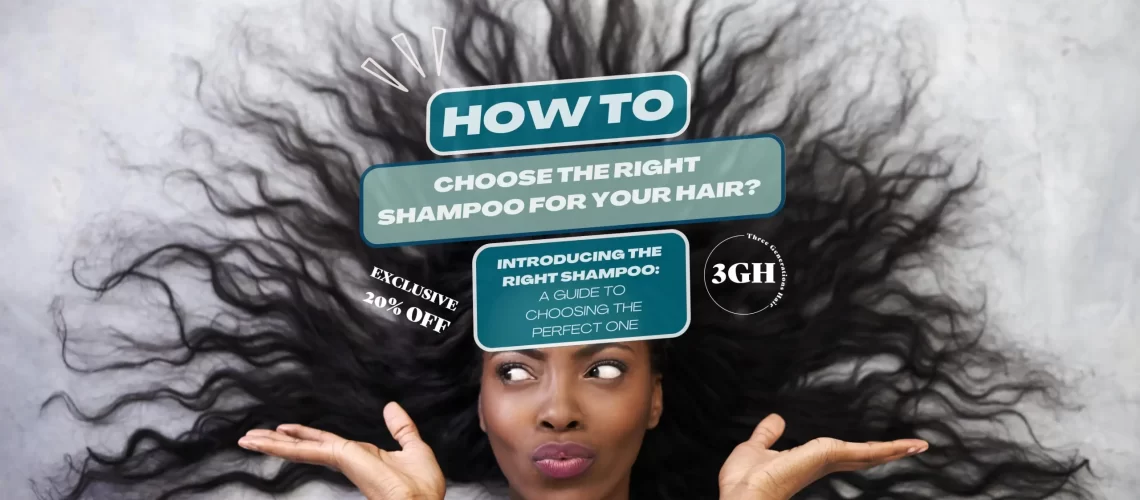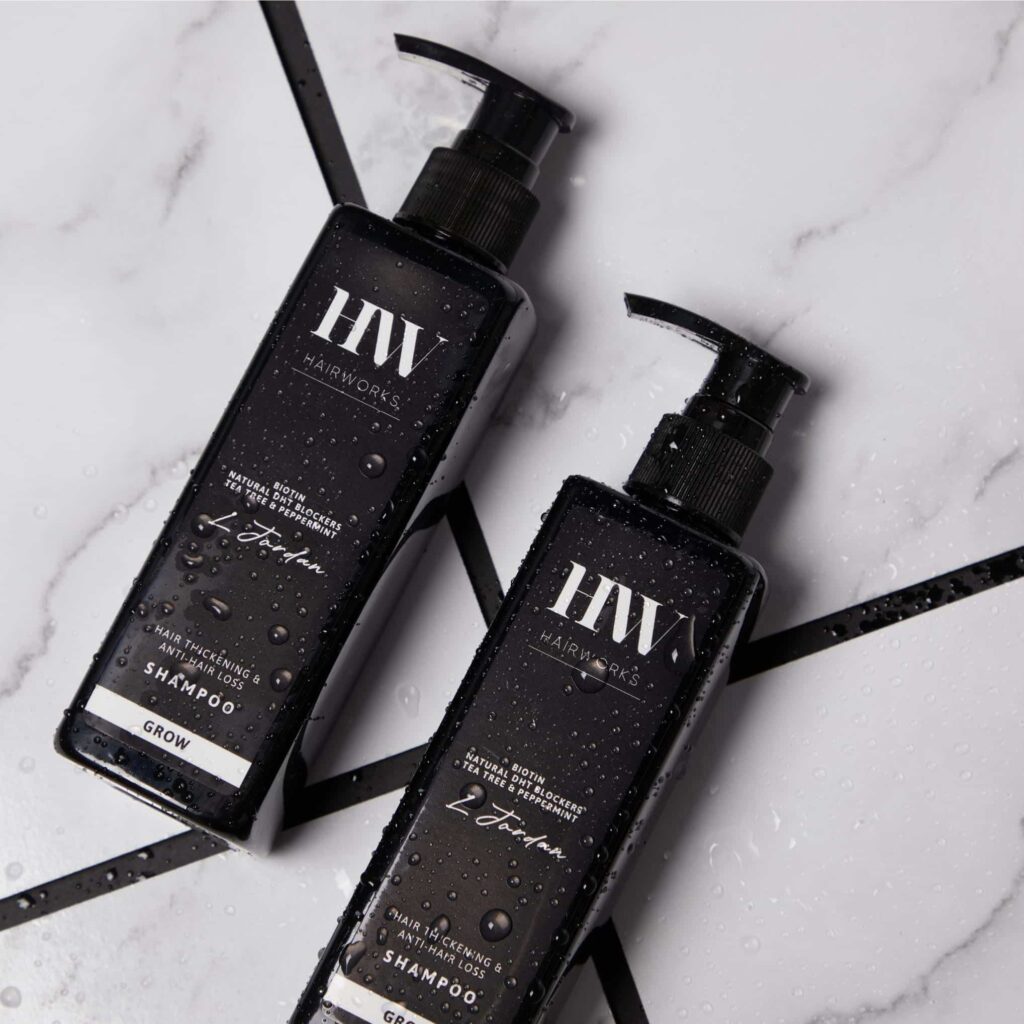How To Choose The Right Shampoo For Your Hair?
Introducing the Right Shampoo:
A Guide to Choosing the Perfect One
Selecting the best shampoo can be overwhelming with all the options available. As a hairstylist with over 17 years of experience and coming from a family of hair experts spanning three generations, I’ve seen shampoos improve significantly since my grandmother started the business 60 years ago. Growing up with professional hairdressers, I always had large tubs of shampoo and conditioner at home because my mom and grandma preferred buying in bulk.
In this blog post, I want to share my insights and help you make a smart decision when you shop for shampoo. There are hydrating, color-safe, volumizing, clarifying, and strengthening choices, among others. Let’s break it down and find the shampoo that will leave your hair feeling amazing.
Join me as we explore the world of shampoos, uncover their secrets, and empower you to choose the right one. Together, we’ll unlock the secret to healthy, beautiful hair.
What Kind Of Scalp Do You Have?
To achieve the best results with your shampoo choices, it’s crucial to consider the needs of your scalp. Shampoo acts as a cleansing agent, primarily designed to remove dirt and impurities from your scalp. On the other hand, conditioners are formulated to address specific hair concerns, such as dryness or frizz, focusing on the mid-shaft to ends of your hair. While shampoo targets the scalp for cleansing, it’s worth noting that sometimes you may require a clarifying shampoo for deep scalp cleansing, while opting for a moisturizing conditioner to nourish and hydrate your hair strands.
There are 3 types of scalp categories: dry, oily, and balanced
Once you determine your scalp type it will be easier to choose the right shampoo. There are generally three main scalp categories: dry, oily, and balanced. Here’s a simple way to figure out your scalp type:
If you can go a week without washing your hair and experience tightness, itchiness, or flakiness, you likely have a dry scalp. For dry scalp, look for shampoos labeled as “hydrating,” “moisturizing,” or “smoothing.” Avoid shampoos labeled as “volumizing,” “fortifying,” or “strengthening” as they can further dry out your scalp. Pre-oiling your hair by applying oil to your scalp for 10-15 minutes before washing can also help. When choosing shampoos, look for ingredients like shea butter, aloe vera, or tea tree. Avoid sulfates, as they can be drying for your hair and scalp.
If you feel the need to wash your hair every other day due to excessive greasiness, you likely have an oily scalp. Oily scalps produce more sebum, leading to greasy and weighed-down hair. While clarifying shampoos are often associated with treating oily scalps, they can be harsh and should be used no more than once a week. Opt for shampoos labeled as “volumizing” or “balancing.” One method to deal with an oily scalp is to shampoo twice, with the first shampoo washing off dirt and product buildup, and the second one targeting excess oils. You can even use two different shampoos—one clarifying and the other balancing—for this process. Remember to apply conditioner only to your ends and mid-shaft. Avoid shampoos labeled as “hydrating,” “smoothing,” or “moisturizing,” and be cautious with shampoos for curly hair, as they may add excessive moisture to an already oily scalp. Look for labels that mention “volumizing” or “balancing.” Ensure thorough rinsing to remove all shampoo residue.
If you can comfortably go three days without your hair feeling overly greasy or dry, you likely have a balanced scalp. This is considered the ideal scalp type, as it maintains a healthy equilibrium without excessive oiliness or dryness.
What Kinda Hair Type Do You Have?
When considering your hair type in conjunction with your scalp type, it’s essential to understand the characteristics and needs specific to each hair category. Here’s a breakdown of shampoo recommendations based on different hair types: I like this article that explains more details about hair types.
1. Straight Hair
It tends to be smooth and lacks significant texture. For straight hair, you can benefit from using smoothing shampoos that help control frizz and add shine. Look for shampoos labeled as “smoothing,” “frizz control,” or “shine-enhancing” to maintain a sleek and polished appearance.
2. Wavy Hair
It has natural waves or loose curls that add texture and body. Balancing shampoos work well for wavy hair, as they provide hydration without weighing down the hair or disrupting the natural waves. Look for shampoos labeled as “balancing,” “enhancing waves,” or “defining curls” to promote the natural beauty of your waves.
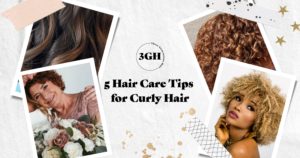
5 Hair Care Tips for Curly Hair
Follow me 5 Hair Care Tips for Curly Hair https://youtu.be/OtxzK59Htis Curly hair can be a unique and beautiful feature, but it also comes with its
3. Curly or Coily Hair
It showcases tighter curls or coils, and it often requires extra moisture and care. When dealing with curly hair, two common concerns are dryness and frizz. Shampoos containing protein can help moisturize the hair and roots, promoting healthy and nourished curls. Look for shampoos labeled as “moisturizing,” “hydrating,” or “frizz-free” to provide the necessary moisture and manageability for curly or coily hair.
Additionally, consider using shampoos specifically formulated for curly hair types. These shampoos often contain ingredients like shea butter, coconut oil, or aloe vera, which provide intense moisture and help define curls. Look for labels mentioning “curl-enhancing,” “curl-defining,” or “coily hair.”
Hair texture
Hair texture plays a significant role in determining the appropriate shampoo for your specific needs. Here’s an overview of shampoo recommendations based on different hair textures
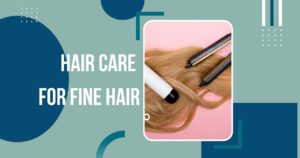
HAIR CARE FOR FINE HAIR
Follow me Hair Care for Fine Hair We all, as humans, want what we don’t have. When we have curly hair, we’ll buy a flat
1. Fine Hair
Fine hair often lacks volume and can become oily quickly. To address these concerns, it’s important to find a balance between removing excess oils without over-moisturizing or weighing down the hair. Creamy shampoos should be avoided as they may add unnecessary moisture. Instead, opt for volumizing shampoos that help build the body by lifting the hair cuticle. Look for shampoos labeled as “volumizing,” “lightweight,” or “clarifying.” Avoid shampoos that contain silicone, as they can weigh down fine hair.
2. Thick Hair
Thick hair tends to lack moisture, and one common challenge is ensuring thorough shampooing throughout the entire hair. When shampooing thick hair, make sure to section your hair well and apply shampoo not only to the top of your head but also to the middle of your scalp to ensure all areas receive adequate cleansing. Take a few extra minutes to rinse out the shampoo thoroughly to prevent product buildup and excessive oiliness. Look for hydrating or moisturizing shampoos that provide the necessary moisture for thick hair. Labels mentioning “hydrating,” “moisturizing,” or “nourishing” are good indicators.
3. Dry Hair
Dry hair often indicates damage and lacks moisture. Factors like coloring and heat styling can contribute to dryness and brittleness. For dry hair, choose creamier shampoos that provide added moisture. Look for labels indicating “moisturizing,” “hydrating,” or “repairing.” It’s crucial to pair your shampoo with a suitable conditioner to further enhance moisture retention. Consider incorporating lighter oils like argan oil into your hair care routine to provide additional hydration. Avoid shampoos that contain sulfates, as they can be drying for your hai
4. Color-Treated Hair
If you’ve invested in coloring your hair, it’s essential to protect and prolong the vibrancy of your color. Color-treated hair requires special care to prevent color fading or damage. Choose color-safe shampoos specifically formulated for color-treated hair. These shampoos typically have a lower pH balance, which helps seal the hair cuticle and preserve the color. They are also gentler and more moisturizing to counteract the potential drying effects of chemical treatments.
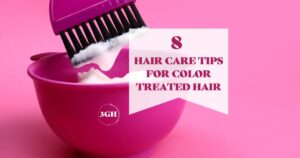
8 Hair Care Tips for Color Treated Hair
Follow me 8 HAIR CARE TIPS FOR COLOR TREATED HAIR Coloring your hair is an excellent way to switch up your look and add some
Bonus Tip For Male Bolding
Dealing with male balding can be a challenging experience, but there are numerous options available to address this issue. Extensive research has shed light on the causes of hair loss and has paved the way for various treatments and remedies. While aging is a common factor, the hormone testosterone, specifically dihydrotestosterone (DHT), has been identified as a significant contributor to male pattern hair loss. DHT, a potent male sex hormone, plays a crucial role in male development during puberty, including the growth of hair, the deepening of the voice, and the development of male genitalia. However, as men age, DHT can adversely affect hair growth, leading to androgenetic alopecia, commonly known as male baldness, which typically begins with a receding hairline.
Research has shown that men experiencing androgenetic alopecia often have higher levels of the enzyme 5-alpha-reductase, responsible for converting testosterone into DHT, as well as increased androgen receptor activity in the scalp. Understanding these underlying factors has led to the development of innovative products that utilize DHT-blocking technology.
These specialized products work by preventing DHT from reaching the hair follicles, effectively addressing the root cause of male pattern hair loss. By blocking the hormone’s activity, these solutions aim to slow down or even reverse the process of hair loss, providing hope and options for those struggling with male balding.
Final Thoughts
Selecting the right shampoo goes beyond just the scent or packaging. As a hairdresser, I understand that shampoos are tools to help solve specific hair problems and prepare your hair for styling. By using the appropriate shampoo, thoroughly cleansing your scalp, and applying the right conditioner and styling products, you can achieve professional-looking results.
While scent is a bonus, it’s important not to let it distract you from the main purpose of the shampoo. Focus on understanding your scalp type, hair type, and hair texture to make informed choices. By considering these factors, you’ll be on the path to selecting the most suitable shampoo that addresses your unique hair needs and promotes healthy, beautiful hair.
Remember, a proper hair care routine starts with the right shampoo, and with the knowledge you’ve gained, you’ll be empowered to make well-informed decisions that contribute to long-lasting and salon-quality results.

